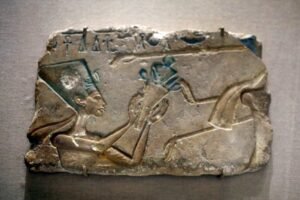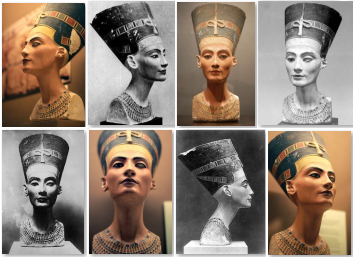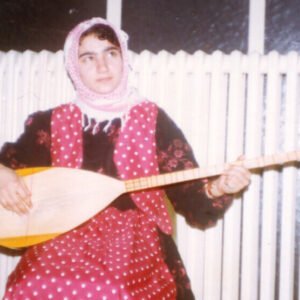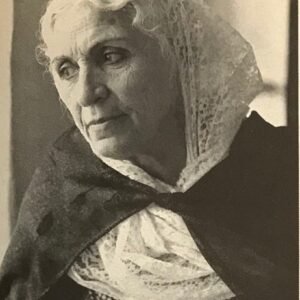Who was Nefertitî? Which were her roots? How she was related to Kurdish ancestors? To know about Nefertitî, her life, her believes and legacy we need to dig deep. It is not only about digging layers of earth that until now hides her body. It is also about layers of patriarchal misconceptions, power interests and a lot of miseries that hide her truth. To do it, it is to investigate, interpret and write not only about one particular character, but the history of women and Kurdish people that remains widely unknown until today.
By the end of the fifteen century BC the Mitannis were in their splendor times. Their system of governance was expanded to a huge area of Middle East. It was situated somewhere between the Euphrates and Tigris, a similar territory of nowadays Kurdistan. They were formed as a con-federalism of different peoples, with a bast majority of Hurrians roots. Which is one of the oldest Arian peoples. Their culture and legacy have reached until nowadays by the Kurdish people. They had a strong connection and respect to nature and their animistic believes were based on that. They worshiped different goodness and gods. Among them the more important was Mitra which represented fidelity and was associated with the sun. It was a religion based on humanity’s attempt to live in a natural harmonic state. Since today there has not been put enough effort to research and understand more the Mitanni history and their believes. Something that is widely known is that their capital was in Waššukanni, the nowadays Serê Kaniyê in Rojava (West Kurdistan).
Since 2019 the current city of Serê Kaniyê was occupied by the Turkish State, and is still in dispute by the kurdish people to return to their houses, their land and sovereignty. Back in the Mitan times, the area was also the interest of many empires, aware of the material and immaterial value of the region. One of those interested powers was the Egypt empire. This ends up with many battles and damages to the population of both territories. With this scenario the pharaoh Amenhotep îI that was governing that time and Tushratta the king of Mitannis started a peace process. In the Amarna letters written by both empires during 1350-1340 BC we can see that one of the agreements was to have a marriage between both empires. That‘s how Tadukhipa, the daughter of the Mitan king, and Amenhotep VI the pharaoh of Egypt got married. Many evidences show how Tadukhipa when she got the status of pharaoh she was named Nefertitî. This new name also evidences her foreign origin meaning “the beautiful has arrived“.
Amenhotep VI died shortly after Tadukhipa arrived in Egypt. But following the political aim of the marriage, Nefertitî eventually married his son Amenhotep IV. From then on Nefertiti governed besides him, taking an important role. We can see this in the different representations. Nefertitî appears almost twice as often as her husband showing an unusual autonomy. Indeed, she is wearing the crown of pharaoh which was also unusual for a woman back then. Many times, she is shown defending herself and captivating the enemy, also riding a war chariot, and worshiping god in the manner of a pharaoh. The pharaoh couple are known until today specially for the change of belief that took place in their governance. Amenhotep IV changed the beliefs of many gods for the centrality of Aten. He even changed his name to Akhenaten to emphasize his direct connection with God. This god was represented by the sun which shows the influence of Nefertitî. Indeed, her education, culture and believes with Mitra and the godesses of the sun, might had had a strong impact.
They reigned at what was arguably the wealthiest period of ancient Egyptian history. Both pharaohs created cities, temples, and the expansion of their believes and governance. Nefertitî had six daughters that appear in several representations. It is said that most of them died in a premature age. Many archaeological findings point that the death of Akhenaten was also before Nefertitî. Which might had led her to reign for a short period by herself until pharaoh Tutankamon arrive to power. He got married with one of Nefertitî daughters Ankhesenpaaten. It is said that the couple were still very young and during the first years were widely guided and influenced by the same Nefertitî.
She might have died soon but until today there is no record of her death. This opens the door to many different theories and suppositions. What it remains is her well-known bust. It remembers us about her bountifulness and also about the respect and important mark that as leading woman left. A strong legacy that started in the today, Kurdistan, continued in Egypt and is extended to the whole world.

Nefertitii offering oil to the Aten. Brooklyn Museum.

Nefertiti, Ankhenaten, and their daughters before the god sun Aten, Egyptian Museum, Cairo.

Amarna letters among Egypt pharaon and Mitan King.





